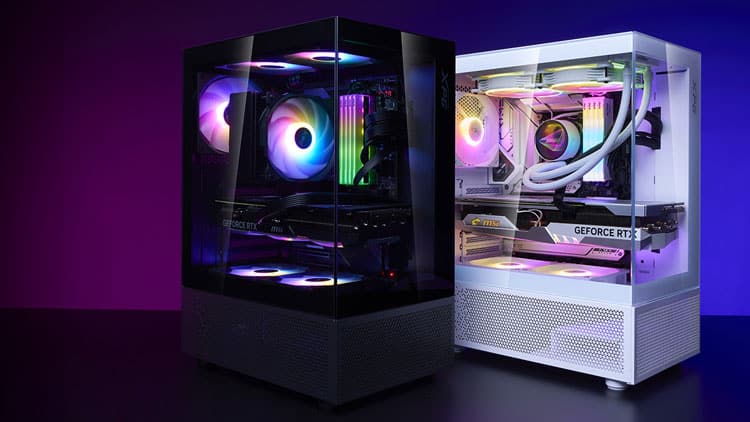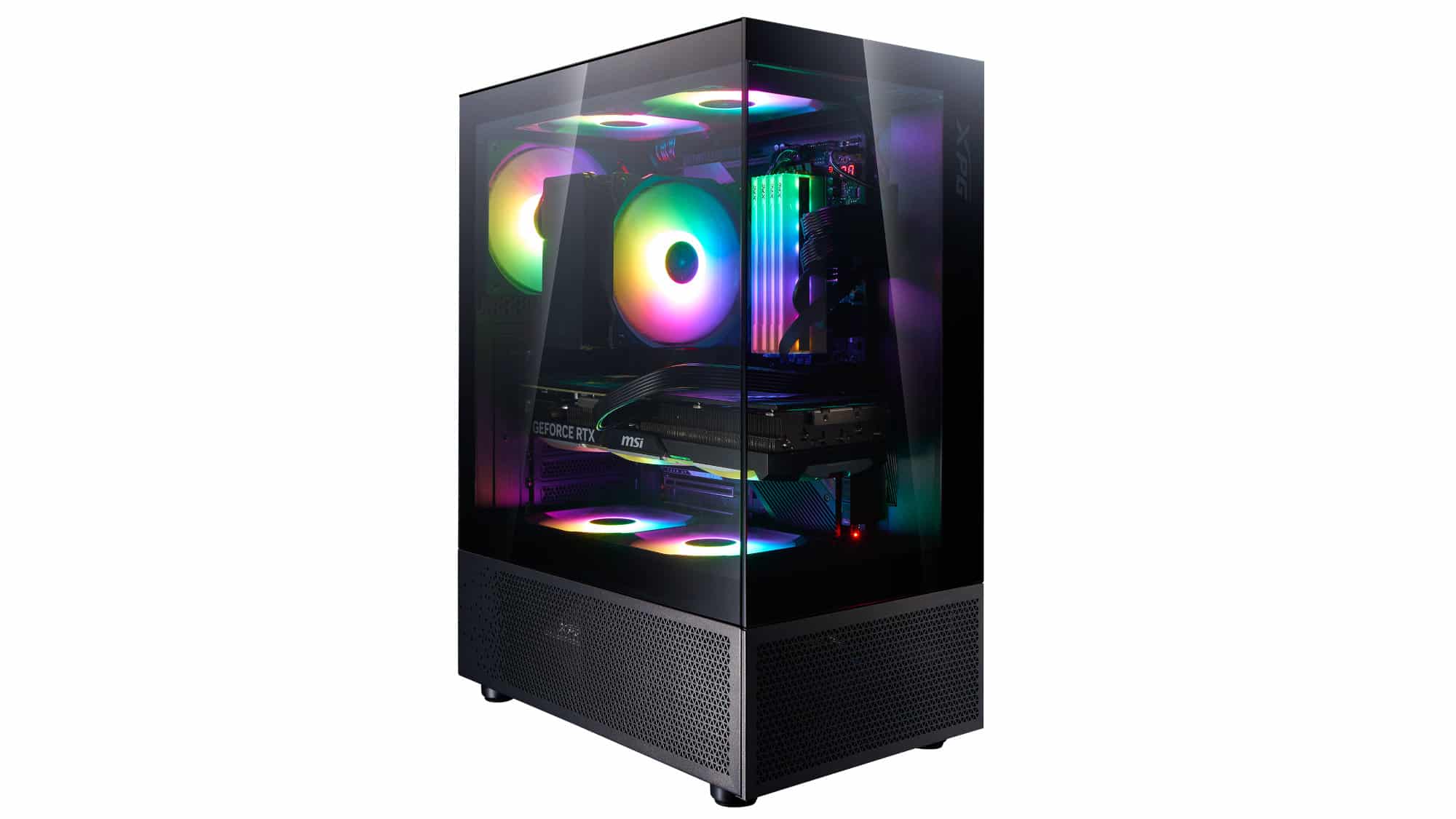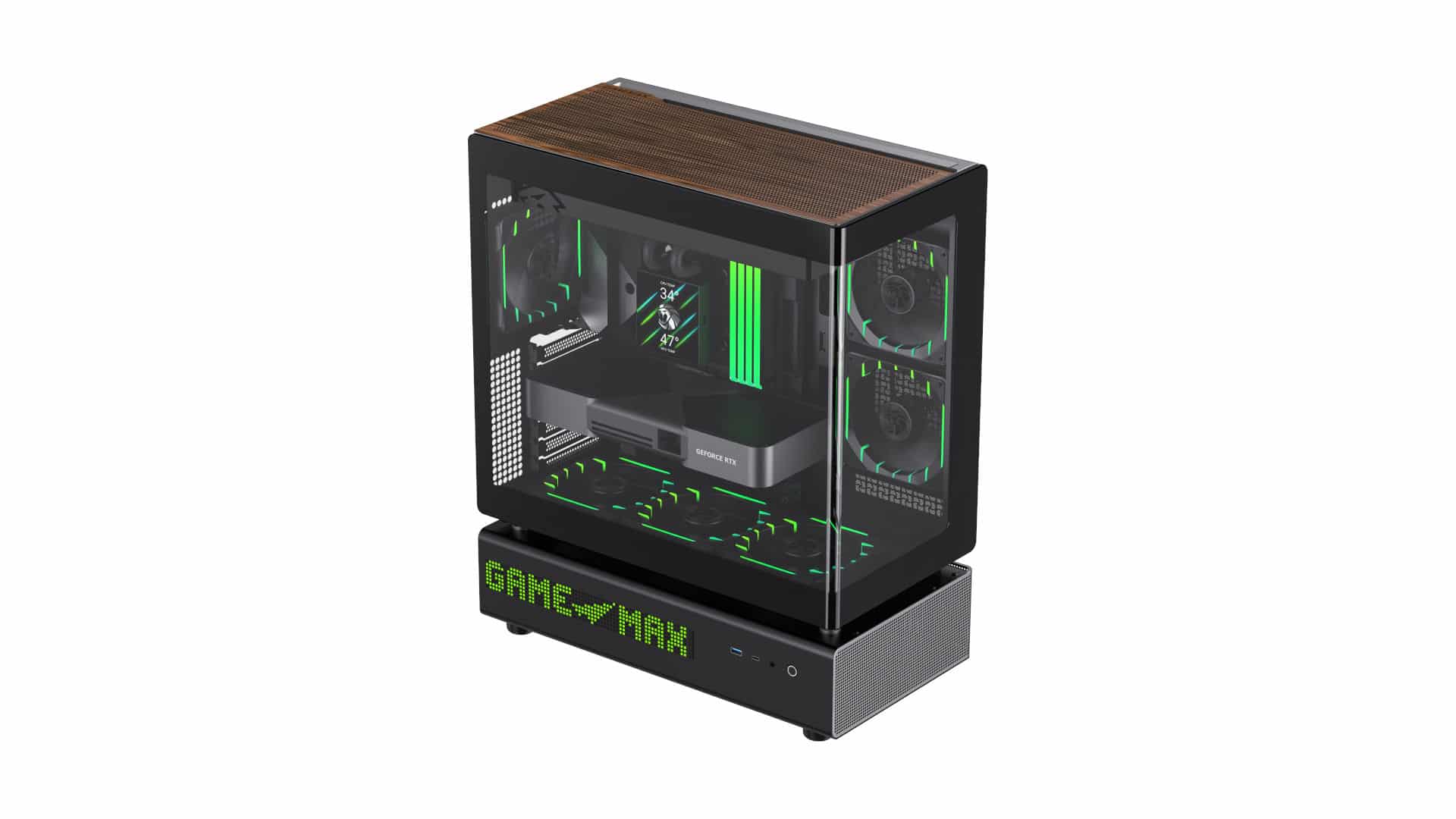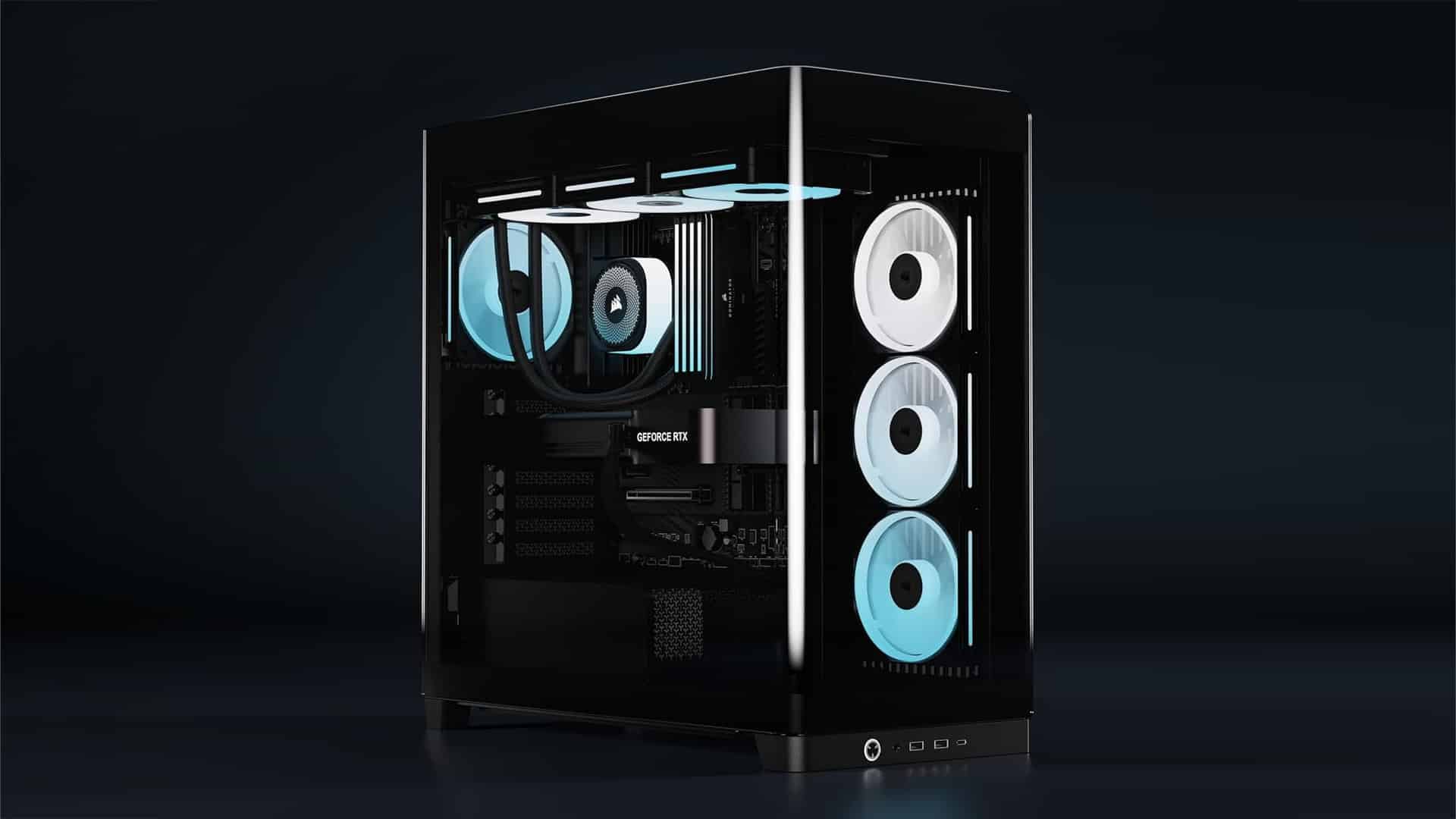Epilogue
The Invader X Mini chassis stands out for its shape-part compatibility and bundled items. Its small footprint and tall design leave enough space even for our E-ATX motherboard (keep in mind that not all E-ATX boards are built the same, but ours did fit). Cable management is good enough, but if you want to populate the storage trays, the room behind the motherboard and the bottom enclosure may be confining.
Competition in this price range is fierce. Many good options are available around the $80-$100 mark. Not all of them will include five programmable RGB fans and support for that much storage in such a small space, but it may not be what everyone is looking for in a chassis. If you dig the looks, don’t hesitate to go for it, but first, make sure your GPU will fit!
- Good build quality
- Dual-tempered glass panels
- Can fit up to 240mm AIO
- Supports ATX, mATX, ITX, and some E-ATX motherboards
- Good storage support
- Five RGB fans included
- Magnetic Top Dust Filter
- Removable HDD and SSD trays
- GPU length support up to 330mm only
- Limited dust filtration on the PSU and HDD enclosure
- Cable management might require extra effort





Hi Aris and Mr. Tstamadianos
May I have one request for you, despite your energy efficiency endeavor? 🙏
I would be very happy if you reviewed these 3 PC chassis using the “old” methodology, i.e. with thermals.
—
1) Lian Li Lancool 207
A very affordable case with strong thermal performance (according to other reviews) … and very popular these days.
2) Antec Flux SE
Other reviews are for Pro version only. This one is smaller and has noise dumping material on the side panels, which could be very interesting for your DELTA.
note: Mr. Jack Wu from Antec wrote to me, that this case should be available in Central Europe in March 2025.
3) Cougar MX600 RGB
Another affordable and well-ventilated case and unlike the previous ones, this has all the vents accommodated with dust protection.
In this case I would like to ask you to make, in addition to the stock configuration, a special measurement w/o dust filters and with one fun on the PSU shroud to equalize the contest.
—
Each of the cases has a depth under 50 cm, can accommodate 180 CPU cooler and has good access to cool air for the CPU and GPU, so I assume they would be at the top of your charts.
edit:…with one fan (not fun) on the PSU shroud …of course 😀
We will try to do them although I cannot make any promises because we have so much in other sections this period. GPUs, monitors, TVs and of course above all, Cybenetics 🙂
thank you very much 🙇 …of course, take your time 😉
Will you also evaluate the thermal performance of the last two XPG cases?
…or is there any reason why not? 😛
because we have performed thermal evaluations in more than a dozen chassis so far, consuming tons of energy, only to see minor temperature differences in the CPU, GPU etc. so it doesn’t worth the time, the money and the trouble.
Well, Aris, quite frankly your answer smells a little bit misleading 😉
Obviously (and I am sure you know it :P) the temperature difference is irrelevant when using such a CPU. The same case as when testing the CPU cooler.
For chassis testing, you use R9 X3D CPU with TJmax at 89°C and for CPU testing, you use R9 X CPU with TJmax at 95°C. So, it’s obvious when you torture the CPU that the temperature would sit close to these values, especially at lower noise levels and on AIR cooling.
The difference lies in frequency and wattage as you know.
—-
Temperature difference in chassis rev. at 25dBA is 1.25°C and at max RPM it is 2.55°C
Temperature difference in AIR Cooler rev. on AMD platform at 25dBA is 0.19 °C and at max it is 2.25°C
Frequency difference in chassis rev. at 25dBA is 134.2 MHz and at max RPM it is 109.35 MHz
Frequency difference in AIR Cooler rev. on AMD platform at 25dBA is 162,64 MHz and at max it is 144.3 MHz.
—-
However, if you find it too bothersome, I have one suggestion if you care.
I have 5800X3D and I found out that if the temperature starts to attack 76°C, the CPU frequency starts to decrease gradually. It maintains the same frequency up to this temperature point.
So, for chassis thermal reviews, you can use a much less demanding CPU (let say Ryzen 5 9600 or you can lower the voltage) and you find this point. You can then set the NH-D15 to such RPM (with some margin), that the noise would be low enough to keep the CPU temperature below this point (in room with temperature of let’s say 35°C … like in the hot case). You can then use this fixed RPM for testing. (If the temperature rises above this temperature point, the chasis will be DSQ.)
Similar approach for GPU (undervolt, min freq.=max freq.<<boost, fixed RPM)
And then you can just record temperatures and not worry about frequency or wattage to have less work to do.
But chassis reviews w/o the thermal performance are …
we also measure frequencies, you know that 😉
Do you really believe that for 100 MHz Freq difference and 2-3C degrees is it worth it to fire up a 14kW Climate Chamber and have it running for 6-8 hours? Above all we are an efficiency certifications agency, and we promote energy efficiency in any form. If I felt that thermals are required, I would do conduct them, but I don’t see any real benefit there since whatever we did so far, and you can easily find our results, shows minimal differences, not worthy of the energy required to conduct these measurements.
I got your point,… OK, is valid 😉
I have shown (from your data) a very similar or even worse situation (in case of temps), that can be observed in AIR Cooler reviews on the AMD platform, in the previous post.
Therefore, can we expect Air Cooler reviews to be canceled on the AMD platform? 😛 …
It would be a pity, because I like them. 🙂